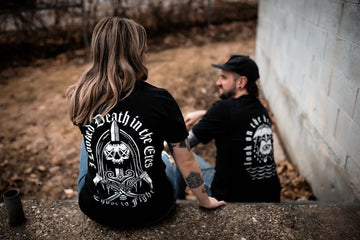I've always recommended against it. Some artists keep their own handy (mostly as a last resort) in order to make it through a difficult session. That's completely up to the artist and client. I've personally seen (and had, myself) a handful of reactions to various numbing creams.
When you're dealing with peoples' skin and health, I feel it's too risky to make assumptions on a body's tolerance to a chemical. A tattoo itself is already an unnatural modification to your body. I believe it's best to keep the process as clean and simple as possible.

Can I Buy My Own Numbing Cream?
I've had clients come in for appointments already sporting cling-wrap with numbing cream underneath. This made for an awkward situation as I’d be reluctant to do the tattoo. Mostly because I’m not familiar with the product they’ve sourced at home. Also, most sessions starting with a pre-numbing ointment wound up disastrously unproductive. No matter how hard I'd try to rid the skin of this ointment—the oily residue just wouldn't budge. By that point it's pretty-well absorbed, creating a barrier between my stencil and the skin.
I'd use Stencil Stuff, which is a product that ensures a wipe-proof stencil. Even with this trusty product I'd still lose my stencil to the oily residue. This meant the outline took far longer as I was having to be so precise and mindful with my wiping. Plus, it's a stress-fest losing an intricate stencil. I’m sure most tattooists would agree with me on that one.
Another setback was the client’s lack of mental preparation for what they’re about to feel. Once the numbing cream has worn off, the pain shocks the client’s body and mind. Mostly because the tattoo is already tender from the line work, which is far worse to experience from the get-go.
Then we have the healing. Often, it's fine, but I've come across a fair amount of people having reactions or bizarre healing patterns afterward. After having a tattoo for the first time, it's expected that the client may call a day or two after to ask if some things are normal. I could typically meet these questions with an educated explanation to ease their concerns. When numbing cream is involved with unusual healing patterns, I can only explain that it's their skin trying to deal with this particular chemical. I don't know exactly what it is or how long the problem will last. I can only refer them to a dermatologist to be on the safe side.
After experiencing these shenanigans over the years, I began sending clients home if they turned up with numbing cream on. Not all artists are bothered by it. If they are, at least now you have some idea as to why.
If you're planning on using numbing cream, ask your tattoo artist first. Turning up with numbing cream may cost you your appointment (depending on the tattooist you see). It's likely to cause you more grief that it's worth.
If your artist is comfortable with numbing the tattoo for you, that's between you and your tattooist. This is all just based on the experiences I've had over the years.
It’s perfectly understandable to want to find a way around an unknown pain. Though, the process doesn’t have to be so scary. Your artist will likely start at a gentle pace to help you get used to it. Of all the people who came to me for their first tattoo, almost all of them have continued adding to their collection. So, it can’t be that bad!
If you’d like to submit your questions to Tattoo FAQ; Email info@inkaddict.com with the subject line ‘Tattoo FAQ’ and your following question.
Happy (numb-free) tatting!




